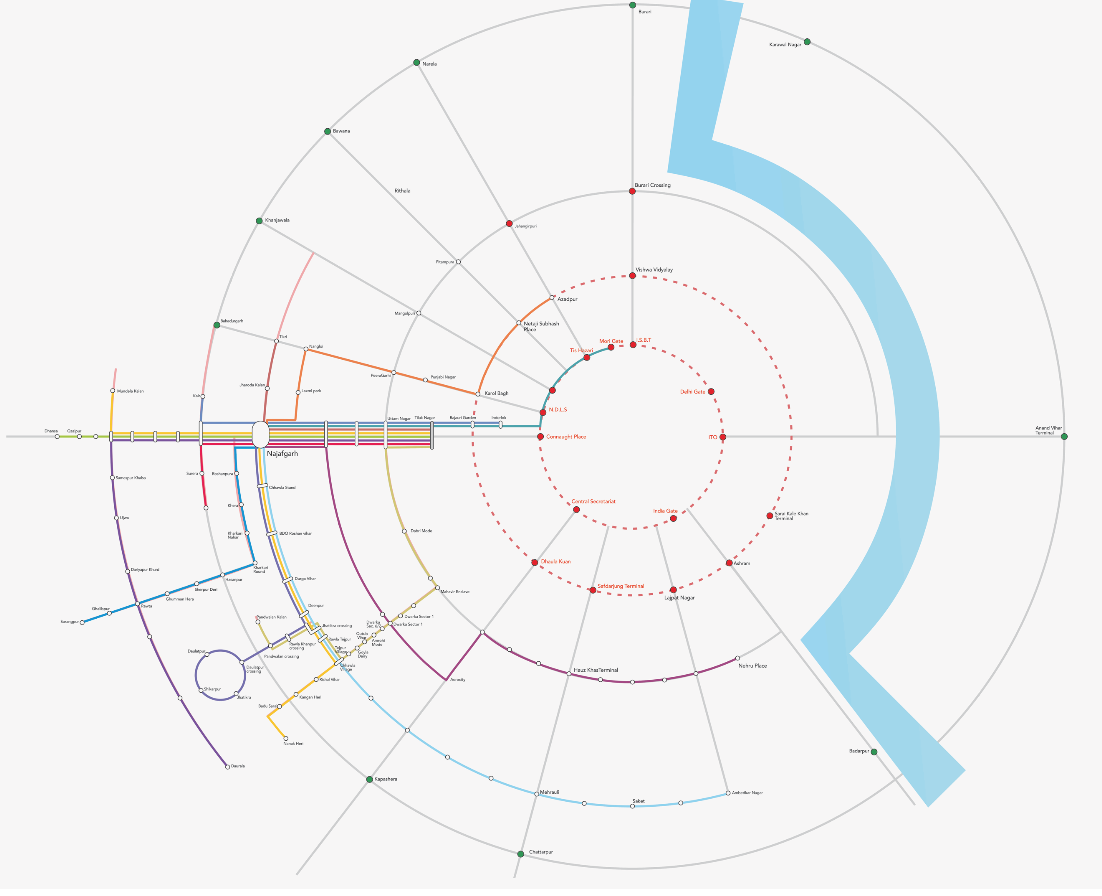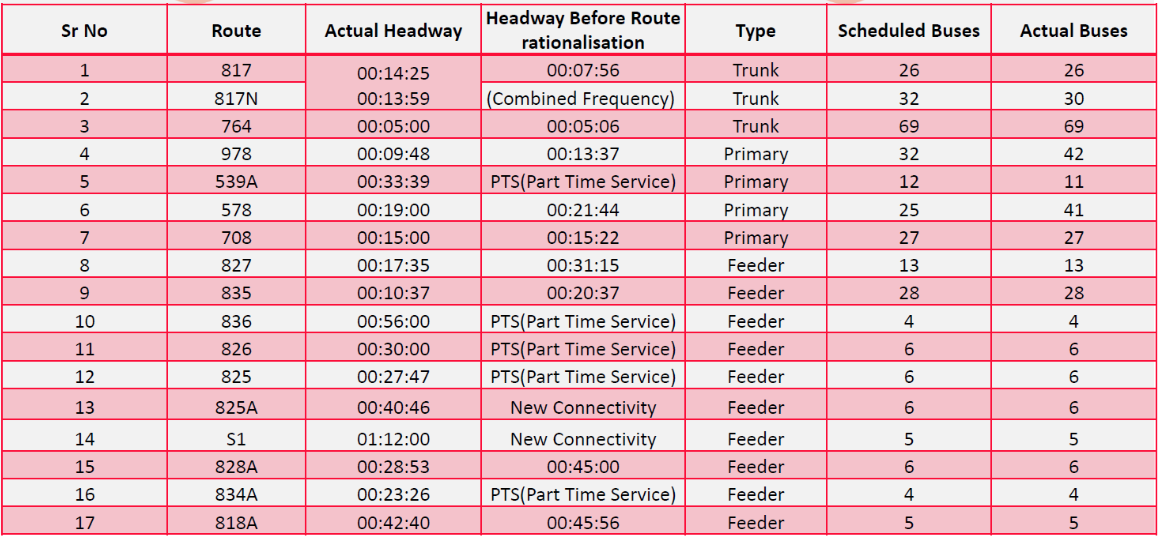Connect Delhi: Learnings from Pilot Implementation
by -
Delhi’s transport system has a plethora of modes catering to the city’s transport demand; however, the issues related to the accessibility and availability of public transport still persist in few areas, owing to its disjointed nature. Many organisations manage the city’s extensive transport system which includes but is not limited to, the Delhi Transport Corporation (DTC), Delhi Integrated Multi-Modal Transit System (DIMTS) Limited, the Government of NCT Transport Department, Delhi Traffic Police, Delhi Metro Rail Corporation (DMRC), etc. All of these authorities have overlapping jurisdiction over operations, competing each other and not operating optimally for available resources. This has resulted in low customer satisfaction and poor operational efficiency.
Transportation is an essential component with regard to the socio-economic development of a city and public transport in particular, plays an important role in providing affordable mobility to all. Indian cities have seen a lot of sporadic growth which has led to destination-based bus networks, wherein there are bus routes connecting every part of a city with each other. This was an effective approach when cities were smaller, but as a city grows in size, the number of routes also increase, making the network complex and negatively impacting service levels. As the city grows, since public transport and feeder routes are laid based on public demand it leads to number of services running parallelly on the same route, increasing competition and decreasing efficiency of the services. It also causes public transport network to fail to efficiently serve the areas with lower demand. Rationalisation of bus routes and feeder services aims to improve accessibility, connectivity, and efficiency of the over-all public transport system of the city.
Over the past few years, the Delhi Government has actively worked towards improving the public transport facilities in the Delhi NCR region. In 2019, the Delhi Government declared the procurement of 4000 buses, of which 1000 are supposed to be electric buses. Ahead of launching the new buses, the city had decided to conduct a route rationalisation study for the existing bus network and propose a rationalised bus transport system. A similar study was conducted by the Government of National Capital Territory of Delhi in the year 2010-11. The study recommended a simplification of the routes’ structure; this study however was based on older travel databases from the years 2007 and 2010. Due to certain implementation issues, the 2010 Rationalisation plan was not passed by the Transport Department. However, the learnings from this exercise were carried forward to future efforts in this regard.
The Transport Department, GNCTD agreed to revisit the study and DIMTS Ltd. was hired as a consultant for the Delhi Route Rationalisation Study. The Hon’ble Transport Minister took keen interest in developing a scientific, data-driven solution to Delhi’s Public transport needs, while also accounting for the needs of the general public. WRI India had the opportunity to provide advisory support to the Minister on this project. Together, we conceptualised the “Connect Delhi” initiative. It was launched on 4th July 2018, by the Delhi Government to bring together multiple stakeholders both inside the government (Transport department, DTC, DMRC, DIMTS, etc.) and outside it (technical experts, civil society, RWAs, etc.) to effectively implement “Route Rationalisation Project for Buses and Feeder Services in Delhi”. The new route rationalisation project’s objective not only focused on altering routes to optimise services, but it also intended to create a reliable, accessible and affordable public transport system for all. This has drastically changed the project outcomes.

In March 2019, a direction based, hierarchical route network was planned in a hub and spoke model. Bus network in a hub and spoke model was proposed for Delhi. The city’s transport nodes are categorised under various levels of hubs: CBD(Central Business districts), Zonal and sub-Zonal connected through CBD circulator routes, trunk routes, primary routes and village connectivity routes. After consultation with experts, it was decided to conduct a pilot, representative of the overall Delhi’s proposed network to derive learnings on possible implementation issues and create an efficient monitoring system for the routes.
 Figure: Map depicting proposed bus network for Delhi.
Figure: Map depicting proposed bus network for Delhi.
The pilot consisted of 17 routes connecting Najafgarh. A total of 285 buses were deployed on these routes, which consisted of 3 trunk routes, 4 primary routes and 10 village connectivity routes. The routes were regularly monitored for four months before formally launching the routes. These four months consisted of daily monitoring of routes, weekly review meetings, and changes in scheduling to adhere to planned headways. The routes initially showed an estimated 75% arrival rate at the terminal depot due to changed scheduling. By regular monitoring of routes, we were able to attain over 85-90% on-time arrival rate. Another advantage with regular monitoring was that it showed a steep decline in the number of scheduled trips missed in a day. The objective of the pilot project was primarily to provide services at a regular frequency on each route and hence, develop a feeling of reliability in the public. Post its launch, the regular weekly monitoring reports were presented to the Hon’ble Transport Minister as part of his weekly update meetings.
Maximum service improvements were seen in the village routes, where part-time services (i.e. buses running once in morning and evening peak) are now providing service every hour. The following table shows the service improvement on all the routes:

The routes included connectivity between villages as well as village to city connections. The improved service on these routes now offers buses running in and out of Najafgarh every 3-5 minutes. There were increased ticket sales on these routes, in comparison to January when there were 3.4 lakhs more tickets issued in September 2019. There is an overall 19% increase in Earnings per km(EPKM) on these 17 routes and over 25% on the trunk route, 817, in September compared to January. The numbers prove the actual outcomes of the project. In the course of implementing the pilot project, the transport department was also able to address other transport issues such as congestion and the accessibility of bus stops.
Going forward, the proposed routes in Delhi must be scaled up and implemented. As discussed earlier, public transport cannot work as a standalone project. The Government also intends to improve feeder routes, i.e. the Draft Delhi Route rationalisation report proposes 189 routes for mini and midi buses services which will be a huge improvement from the existing 72 routes. Also, to ensure that daily bus users are not affected by the cost of interchange, DTC and DIMTS has agreed to a fare integration and fare capping system in Delhi, to ensure seamless travel for users without additional costs. The effective implementation of the route rationalisation project in Delhi shall mark a revolutionary moment for public transport in India.


